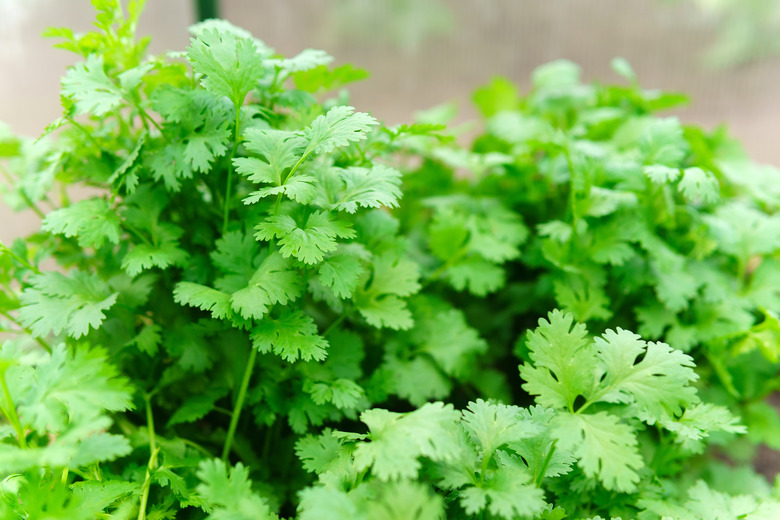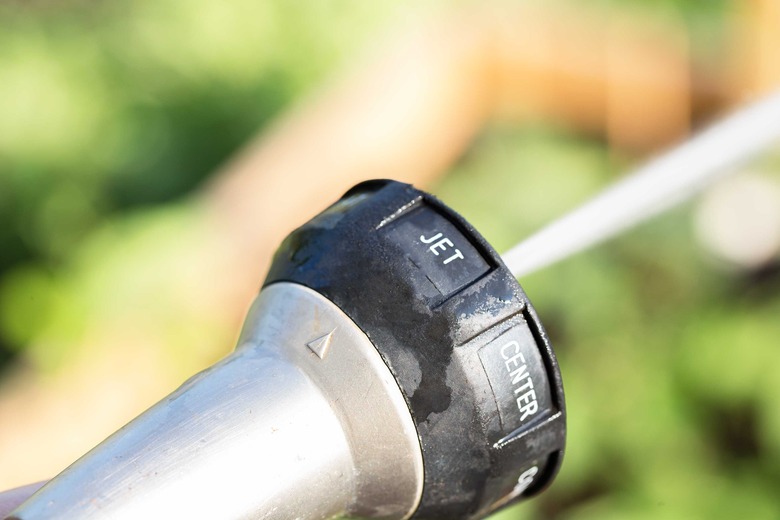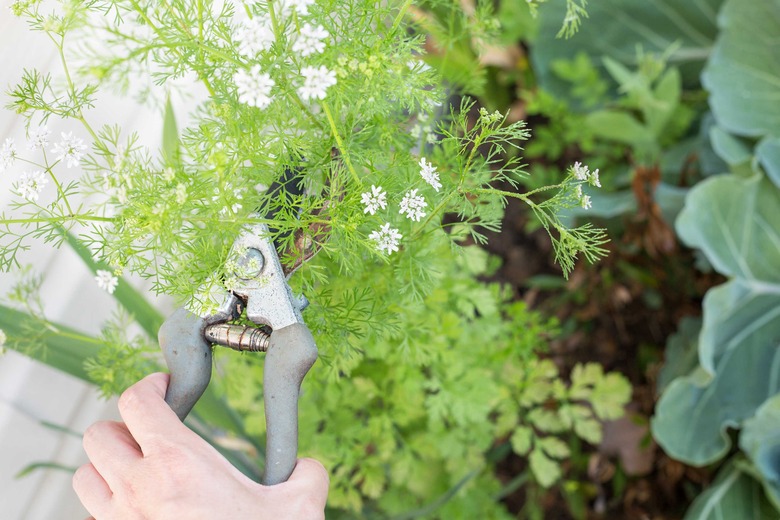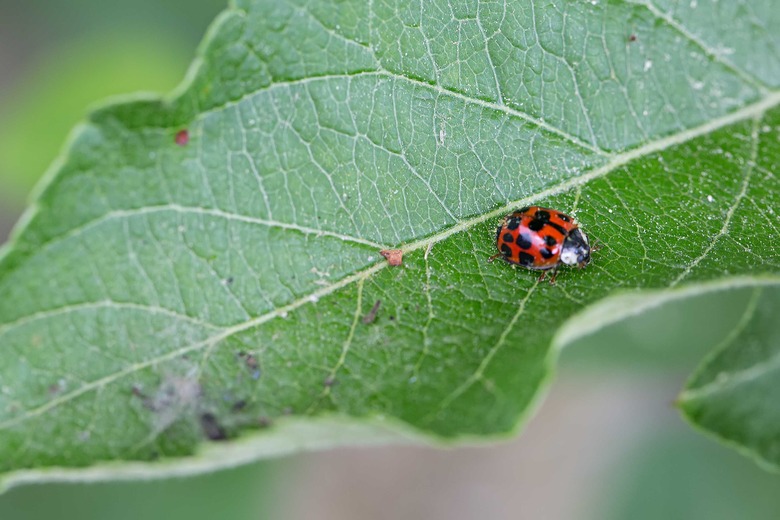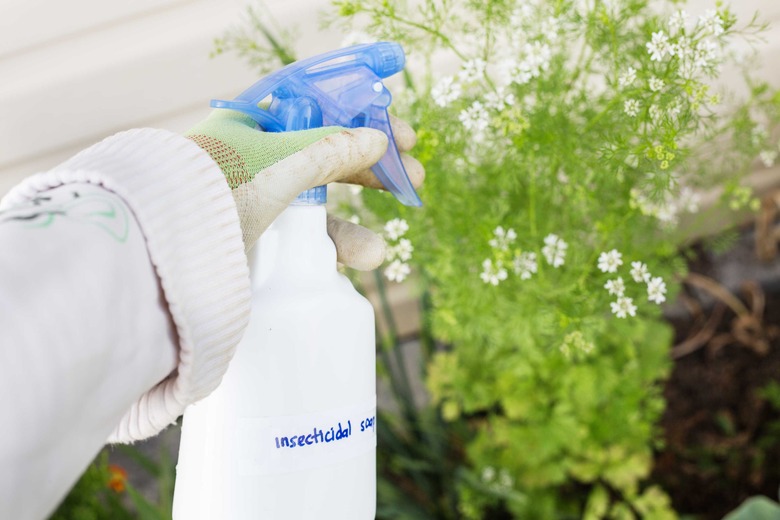How To Kill Aphids On Cilantro
We may receive a commission on purchases made from links.
As a two-for-the-price-of-one bargain, annual cilantro (Coriandrum sativum) is an herb dear to the hearts of thrifty gardeners. Its lacy green leaves imbue salsa, pesto, and chimichurri sauce with fragrant, grassy flavor, and its white or pinkish flowers supply the coriander seeds to spice curry powders, barbecue rubs, and dessert sauces. The bad news is that green peach and coriander aphid insects occasionally regard cilantro as gourmet dining. Fortunately, several organic aphid-killing options protect the harvest.
Wash Them Off
Wash Them Off
Although their light-green coloring is an effective camouflage, these aphids reproduce so rapidly that they soon become visible on cilantro's tender new stems and leaves. Stunted shoots and yellow leaves coated with the insects' sticky, transparent waste are an early clue to their presence.
An easy and effective treatment is to set the spray attachment on a garden hose to jet a sharp spray and blast the cilantro with water. Any aphids that don't drown fall to the ground and have difficulty returning to the plant. To reduce the risk of fungal disease, spray the cilantro early in the day so it dries before sundown.
Hit the entire plant, paying special attention to the backs of the leaves and the petioles, where groups of aphids often gather and feed. Repeat the treatment every two to three days until the pests are eliminated.
Wipe or Prune Them Away
Wipe or Prune Them Away
One water-conserving, aphid-killing alternative is to wipe small colonies off the cilantro with a water-dampened cloth. Another is to prune the infested leaves and stems, toss them in a sealed plastic bag, and dispose of the bag in the trash. Do not add the trimmings to your compost heap.
Both methods require daily inspection because aphids are born pregnant and start giving birth to their own pregnant daughters in about a week. Missing just one or two means a swift reinfestation.
To prevent the spread of disease, disinfect pruning tools between cuts with a cloth dipped in rubbing alcohol. Allow the tool to air-dry.
Enlist the Enemies
Enlist the Enemies
Lady beetles and their larvae and green lacewing larvae feast on aphids as happily as aphids feast on cilantro. While both are commercially available, attracting them to the garden with plants is more economical.
Entice the beneficial bugs with shallow-throated, nectar- or pollen-heavy flowers such as sweet alyssum (Lobularia maritima), perennial in U.S. Department of Agriculture plant hardiness zones 5 through 9, or coreopsis (Coreopsis spp.), hardy in USDA zones 3 though 9, depending on the variety. The lady beetles will stay to lay eggs that hatch hundreds of voracious aphid-eating babies.
Smother Them With Soap
Smother Them With Soap
When cultural controls or friendly bugs aren't enough, organic, ready-to-use insecticidal soap spray suffocates aphids on contact. Safe to use up to the day of harvest, the soap won't harm aphid predators visiting the plants after it dries. Homemade insecticidal soap is also an effective pesticide for numerous garden pest species.
Treat the plants on a dry, windless day with no rain expected for at least 24 hours. If it rains, you'll have to reapply the solution after it rains. Dress appropriately in long pants and a long-sleeved shirt, waterproof gloves, safety goggles, and a respiratory mask. To hit all the aphids, spray until the soap runs from all the cilantro's surfaces.
Reapply the soap every two to three days, or at the label's recommended frequency, until the infestation subsides.
References
- Missouri Botanical Garden: Coriandrum sativum
- University of Missouri Extension: Aphids, Scales, and Mites on Home Garden and Landscape Plants
- Missouri Botanical Garden: Lobularia maritima
- University of Vermont Department of Plant and Soil Sciences: Coreopsis
- University of California Statewide Integrated Pest Management: Active Ingredient: Soap
